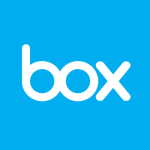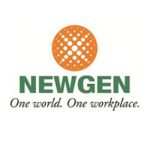What is our primary use case?
I work as a manager for professional services implementation and Documentum Implementation engineer, we are partner with Dell EMC for Documentum Platform. We provide professional services to our customers, mainly government entities, implementing the product on-premises.
Our primary use case is generally twofold: Enabling our clients to have one repository, a centralized system, for all types of documents - PDFs, Word documents, and scanned images. And secondly, enabling document sharing between teams while maintaining security.
There's also the addition of the high volume batch scanning of the Captiva module which is a smart automated capture solution with image enhancements, indexing, utilizing OCR technology to identify document types. Each document is linked to specific metadata for business information, extracting and indexing, raising the texture of the scanned image, and auto-indexing the business fields, which is then integrated automatically to the ECM repository.
We utilize XCP, the xCelerated composition platform to develop business applications, supporting case management solutions for our customers, and also automate work review, approvals and specific business processes.
What is most valuable?
The most valuable feature is that it's a central repository for everything, whether it's videos, documents, Excel sheets, etc. Building on top of the document platform means business applications can share and integrate with this repository. Although everyone has their own local disk with many documents these days, there's a need to have one single repository, one source of truth so you know you have the latest version, including comments, earlier versions, approvals, history, audit trail, etc., everything related to that document management platform.
What needs improvement?
I think the vertical application could be improved. The integration with business applications means that sometimes the end-user, for example, the finance person, wants to see the scanned copy from inside the SAP form, or from inside the Oracle form and although Documentum claims it, it's not simple because integration between the ERP business applications and Documentum doesn't work so well.
If I'm searching for a certain transaction in the business application form and I want to see the attachments, the original scanned copy of the invoice, or the PO without the need to have another interface to login and search for a document, I want to be able to click on some sort of customized button or something to retrieve the attachments or the related documents from inside the ERP business application interface.
When it comes to additional features, OpenText announced that they are working to develop new modern web interface that will allow integration with Documentum repository as a backend. This was a concern because other competitors have a GUI, an outstanding user experience. It's a little slow now with OpenText, but if they release this in the coming two quarters, it would be great.
For how long have I used the solution?
We've been using the product for 14 years.
What do I think about the stability of the solution?
It's a very stable product, one of the leaders in the market.
What do I think about the scalability of the solution?
The product is very scalable.
How are customer service and technical support?
When Dell EMC had the technical support, it was better in terms of response and resolution. After the acquisition of Documentum from Dell EMC to OpenText the support became not as good in terms of responses and resolutions. I believe OpenText is working to enhance it in the coming years.
Which solution did I use previously and why did I switch?
We started with Documentum, the enterprise content management platform. Recently, we have been involved with two or three projects using IBM Filenet, a competitor to Documentum and we had a small to medium-size customer requiring an open source for archiving or document management, so we utilized Alfresco Community Edition.
How was the initial setup?
The initial setup is simple. There is a lot of documentation and we have our own procedures for installation based on individual architectural requirements. Deployment time really depends on the environment. If it's only Documentum that's quite a quick process, but if it's the whole bundle with Documentum Engine Xplore, CPS, then it can take three days and if you're adding extras on top of this then it will take longer. Deployment usually requires one or two people.
What's my experience with pricing, setup cost, and licensing?
Governments organizations don't pay an annual cloud subscription licensing fee, most licenses for government organizations are perpetual.
What other advice do I have?
The architecture of Documentum is outstanding compared to other solutions like FileNet and Alfresco. However, IBM's revamp of FileNet to reposition it might make a difference. They have a complete bundle now for Digital Business Automation (DBA). All types of tasks, content management, data capture, and workflow automation solutions are already bundled out of the box and integrated.
People should be aware that the learning curve is steep. It's best to have an expert carry out the architecture and configuration implementation because it contains lots of modules, so it needs expertise.
I would rate this product an eight out of 10.
Disclosure: My company has a business relationship with this vendor other than being a customer: Certified Business Partner

















